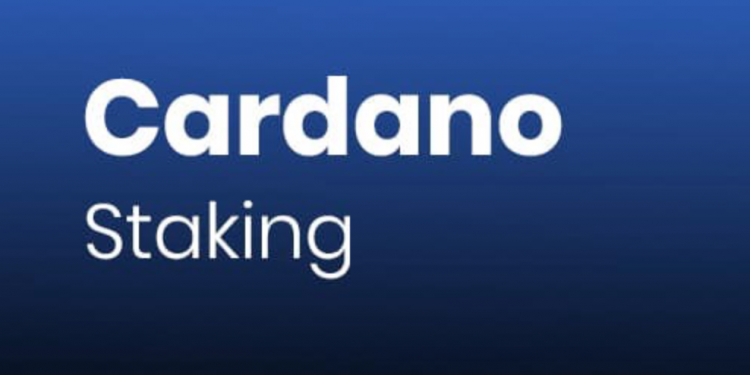You don’t necessarily need expensive mining rigs to make money in the crypto sphere. With the potential to make passive income from crypto staking, it can easily feel like you’re getting free money.
Cardano (ADA) staking has become an appealing venture to many crypto enthusiasts passionate about creating a passive income stream. If you’ve ever heard about crypto staking and don’t have the slightest idea of what it could be, this article will teach you the most important thing you need to know about Cardano staking.
What is Crypto Staking?
Staking is a procedure through which some blockchain protocols enable crypto users to earn passive while supporting the stability of the blockchain network. The basis for staking is the Proof-of-Stake (PoS) consensus mechanism. This is a process in which you use tokens from a crypto network (e.g., Cardano’s ADA token) to validate transactions within the network.
Most blockchains such as Bitcoin use the proof-of-work mechanism to verify transactions. Crypto miners compete against one another to be the first to solve problems and, in this way, contribute to the network.
Other blockchains, such as Cardano, now prefer the less expensive proof-of-stake mechanism to validate a transaction. In a proof-of-stake blockchain, verification is done through node selection. Each new block of the blockchain needs to be added to a node. The algorithm selects which node will be used next based on how many coins the node has staked or locked away.
What are Nodes?
Nodes comprise a group of people who pool their stakes together and lock their coins away in a node. The greater the number of coins that are locked away, the greater the probability that a node will produce a block. Nodes earn rewards whenever a block is created, and those rewards get distributed among those who contributed to the pool.
The Cardano (ADA) coins you use for staking don’t leave your cryptocurrency wallet, meaning Cardano staking is very safe. You may compare the rewards you earn through staking to the interest you make in a savings account.
How Cardano Staking Works
Cardano’s staking program has been designed to be secure and scalable while rewarding honest participants for helping maintain the network. Participants get rewarded at regular intervals, which are every few days in most cases. At the same time, the incentive mechanism discourages bad actors.
Unlike other protocols that allow crypto staking, Cardano Staking is small-investor friendly as there’s no minimum amount required for staking. The staking periods are called epochs, and they last five days. However, there’s usually a waiting period of 15 to 20 days following your initial staking of ADA before you can start receiving your rewards.
The other difference with proof-of-stake tokens is that your ADA tokens are not locked away while you stake them. With Cardano, you stake your wallet address instead of your tokens, meaning that you can transfer your tokens any time you want. To un-stake your ADA, you move the tokens out of the staked wallet.
How to Stake Cardano
There are two different ways to stake Cardano. You can either stake yourself or stake through an exchange or broker. Let’s briefly describe what both can do.
1. Staking yourself
To operate Cardano staking on your own, you need a suitable Cardano wallet and must delegate your ADA tokens to a staking pool from this wallet. There are two different ways to do this:
Daedalus is a desktop wallet and is recommended for more advanced Cardano users.
Yoroi is more geared towards beginners. You can use the wallet as an extension for your browser.
2. Staking via Cryptocurrency Exchanges and Brokers
If you find setting up the wallet and delegating to the Cardano staking pools too complicated, you can use specific platforms on which you can do Cardano staking. Crypto exchanges specialize in cryptocurrencies, while brokers are mostly traditional platforms that offer cryptocurrency trading. Some of the crypto exchanges that facilitate Cardano staking include Binance, Coinbase, Kraken, and eToro.
Closing Remarks
Staking Cardano is an exciting way to generate passive income, especially if you’re focused on the long term. Also, you don’t need too much technical ability, and when you feel like you’ve had enough, you can easily decide to un-stake your tokens.










